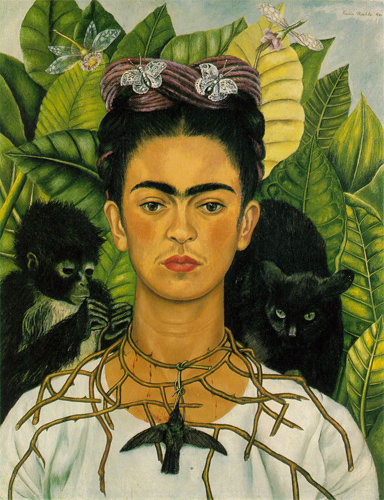Facts About Self-Portrait with Thorn Necklace and Hummingbird
"Self-Portrait with Thorn Necklace and Hummingbird" is an evocative 1940 painting by the celebrated Mexican artist Frida Kahlo. This striking self-portrait, which features a black cat and a monkey, was created during a tumultuous period in Kahlo's life—immediately following her divorce from Diego Rivera and the conclusion of her affair with photographer Nickolas Muray. Intriguingly, Muray acquired the painting shortly after its completion, and it is now part of the Nickolas Muray collection housed at the Harry Ransom Center, University of Texas at Austin.
Frida Kahlo, active as a painter from 1925 to 1954, is renowned for her self-portraits that vividly portray her physical and emotional tribulations, including her struggles with health issues, infertility, and personal hardships. Through her art, Kahlo reasserted control over her body against societal norms and patriarchal expectations, deeply drawing from Mexican culture and history. Her profound connection with indigenous Mexican culture profoundly shaped her artistic style and symbolic choices, establishing her as a defiant voice against colonialism and male dominance.
In "Self-Portrait with Thorn Necklace and Hummingbird" Kahlo is depicted with her signature prominent eyebrows, adorned with a thorn necklace, from which a hummingbird dangles. She is surrounded by various animals and insects in a lush jungle setting. The symbolism in this painting is rich and layered, reflecting Kahlo's personal experiences and themes of love, pain, and rebirth. The painting has been exhibited in numerous museums worldwide, underscoring Kahlo's enduring impact on art and culture.

 Canada
Canada